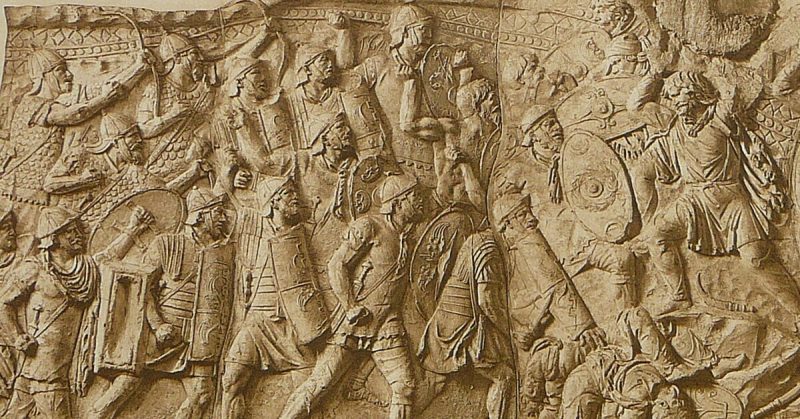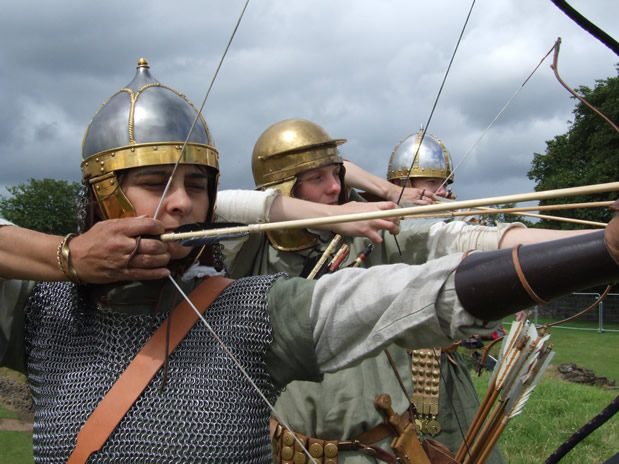Roman Archery
Roman Archery
The ancient Romans were skilled archers and made extensive use of the bow and arrow in both warfare and hunting. Archery played a significant role in Roman culture and society, and the bow was an important symbol of power and status. In this article, we will explore the history of Roman archery, including its use in warfare, hunting, and entertainment.
When we think of the ancient Roman military, their use of archery does not come immediately to mind. We picture the Roman legionnaire, equipped with his concave, rectangular shield (scutum), his javelin (pilum), and his short fighting sword, the gladius. Yet archery played an important role in Roman military affairs, and because of their encounters with enemies who saw much success against them with the use of archery, the Roman military increasingly emphasized archery.
The Early Days of Rome
The origins of Roman archery can be traced back to the Etruscan civilization, which flourished in central Italy from the 8th to the 5th century BC. The Etruscans were skilled archers and used the bow and arrow for both hunting and warfare. Archery was also an important part of Etruscan religious ceremonies, and the bow was associated with the god Apollo.
The Romans owed much to the Etruscans in terms of their culture. Etruscans on the other hand were heavily influenced by the ancient Greeks. The early Romans fought long and hard with the Etruscans (c. 700 B.C. – c. 500 B.C.) for control of the Italian peninsula. After approximately 200 years of back and forth, the Romans would eventually come to dominate.

When the Romans came into contact with the Etruscans, they adopted many of their archery practices and incorporated them into their own military and hunting activities. The Romans used a variety of different bows, including the simple self-bow and the more complex composite bow, which was made from layers of different materials such as wood, bone, and sinew.
It is not known for certain when or how composite bows first came into use in Rome. It would be safe to assume that it was very early on, as the Greeks knew of composite bows from encounters with nomads from the northeast, namely the Scythians. Roman archers also used a variety of different arrows, including broadhead arrows for hunting and bodkin arrows for piercing armor.

Sagittarii
In Roman warfare, archers played a vital role in the Roman army. Archery was used to support infantry and cavalry, and Roman archers were trained to shoot at a rate of up to 15 arrows per minute. Roman archers were also skilled at shooting at moving targets and could hit a target at distances of up to 300 meters.
Roman archers were organized into specialist units known as sagittarii (from sagittarii lit. “arrow-men”, from sagitta = “arrow”. Latin, plural form of sagittarius), which were equipped with both bows and javelins. The sagittarii were usually deployed on the flanks of the Roman battle line, where they could support the infantry and cavalry and attack the enemy’s flanks and rear.
The sagittarii’s primary bow type appears to be the composite bow, yet the late Roman writer Vegetius suggests that recruits be trained with “arcubus ligneis” (with wooden bows)
In addition to their military role, archers also played an important role in Roman hunting. Roman nobles and wealthy citizens enjoyed hunting as a leisure activity, and archers were used to hunt a variety of game, including deer, wild boar, and even lions and bears. Archery was also used in gladiator games, where archers and other specialists known as velites would participate in mock battles and hunts.
Archery was also an important part of Roman cultural and social life. Competitions were held as part of religious festivals and public games, and archery clubs known as tirones were popular among Roman citizens. Archery was also used in educational and training programs for Roman youth, and it was considered an important skill for young Romans to learn.
Roman God of Archery
The bow and arrow were also important symbols in Roman culture and were associated with virtues such as strength, courage, and self-control. The Roman goddess Diana was often depicted with a bow and arrow. The bow was a common symbol on Roman coins and other artwork.
In conclusion, archery played a significant role in the ancient Roman world. It was an important part of the Roman military, hunting, and cultural practices. The bow and arrow were valued for their practical usefulness and were also revered as symbols of power and virtue. Today, the legacy of Roman archery can be seen in the continued popularity of archery as a sport and recreational activity. For more on archery and mythology, check out our article on Famous Archers in Mythology, Fiction & History.

Roman Auxiliary Archers
Archery would come to play an ever-increasing role in the Roman military after the disastrous defeat of a Roman army by the Parthians at the battle of Carrhae (53 BC). The Romans were outmaneuvered by swarms of mounted archers and they suffered what many historians regard as their most thorough and crushing defeats.
It was from this point forward that the Roman military saw the need to adapt and incorporate more archers, especially mounted archers into their ranks. The specialist troops who supported the regular legions were known as the Auxilia (Latin: [au̯kˈs̠ɪlia], lit. “auxiliaries”). The archers who made up the ranks of the auxiliary forces were recruited from the fringes of Roman territory and were not citizens like the legionaries. Let’s have a brief overview of Roman Auxiliaries and how Roman archery fit into their ranks.
Auxilia – Outsourcing Roman Archery
Although Rome’s legions had served her greatly in the Republic days, there was a serious lack of cavalry, as well as slingers and archers. For example, in the year 200 A.D., a 4,200-strong legion had only 300 mounted troops (7% of the legion). Horses were expensive luxury items for most Romans. After learning the hard way, that cavalry and specialist ranged units were becoming necessary, the military had to come up with a solution to bolster these units. They chose to recruit from outside of the Roman citizenry.
The Auxilia were introduced by Caesar Augustus (born Gaius Octavius, 23 September 63 BC – 19 August AD 14). They would be the specialist troops, recruited from the peregrine, or free peripheral Roman provinces. To be a soldier in a Roman legion, you would’ve had to be a Roman citizen. To be a warrior within the Auxilia however, citizenship was not required.

In the 2nd century A.D., about 1 in 12 regiments were designated as sagittariorum or archer units and had a total strength of approximately 17,600 men.
Most of the archers in the Roman armies from about the 2nd century B.C. onwards were recruited from the island of Crete. Later on in the Republic period (88–30 BC) the majority of archers were recruited from Syria, with a much smaller proportion coming from Thrace and Anatolia (modern-day Turkey)
The Evolution of Roman Archery
From a military perspective, Ancient Rome was very adaptive and able to evolve with the times. Significant changes in tactics and fighting styles came over the centuries. This was due to the fact that Rome was a military state with formidable enemies. Rome learned from its enemies and its defeats and adapted accordingly.
After a crushing defeat, such as the one suffered in the Battle of Carrhae fought in 53 BC, Roman military strategists knew they needed more archers and cavalry. It was always Rome’s enemies that forced her to improve and evolve. Whether it was the Carthaginians, the Parthians, the Gauls, or the Huns, Rome always had fierce competition. Much like biological evolution, military affairs require adaptation and evolution or death.

The following table illustrates a breakdown of Roman military units over a period of approximately 300 years. As you can see, there was an ever-increasing demand for auxiliary troops. Also, they eventually made up the bulk of a Roman military regiment.
| Army corps | Tiberius 24 AD |
Hadrian c. 130 AD |
S. Severus 211 AD |
3rd-century crisis c. 270 AD |
Diocletian 284–305 |
|---|---|---|---|---|---|
| LEGIONS | 125,000[79] | 155,000[80] | 182,000[81] | ||
| AUXILIA | 125,000] | 218,000 | 250,000[84] | ||
| Praetorian Guard | ~~5,000 | ~~8,000[86] | ~15,000[86] | ||
| Total Roman Army | 255,000 | 381,000[88] | 447,000[89] | 290,000?[90] | 390,000[91] |
